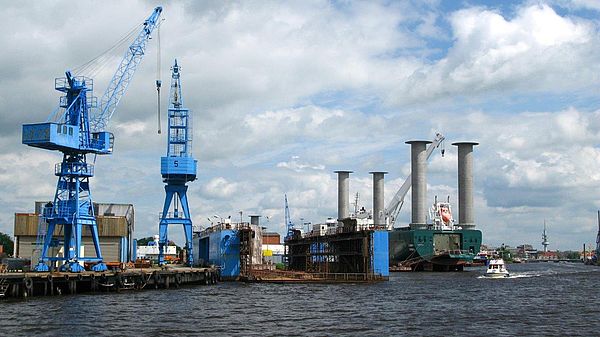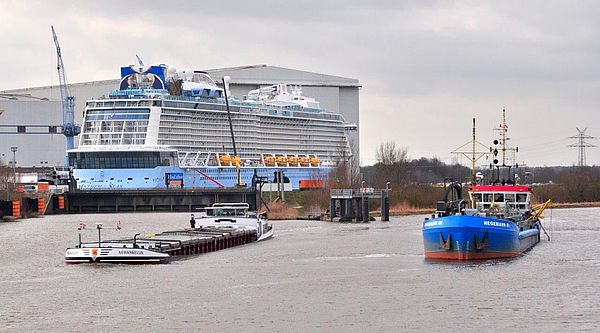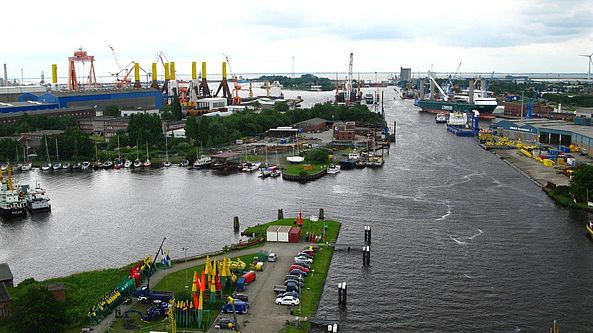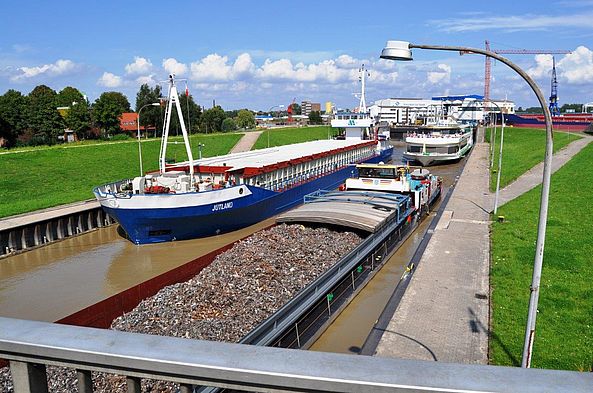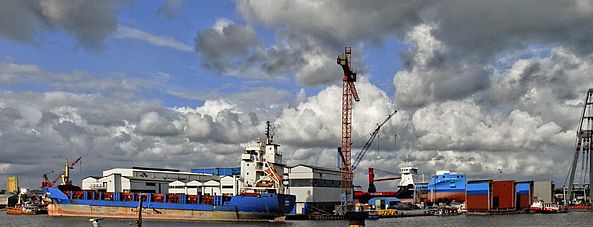The contract partners of the Master Plan Ems 2050 have committed themselves to reconcile the equal <link informationen oekologie green internal link in current>ecological and <link informationen oekonomie green internal link in current>economic interests. This is why the Ems's efficiency as a <link informationen glossar bundeswasserstrassen green internal link in current>federal waterway must be maintained by all measures for improving the river's ecological condition. In concrete terms, this means that both the security and ease of ship traffic are guaranteed and the availability of all ports is ensured. The Ems and Ems-Dortmund canal are part of the central network of federal waterways in Germany, meaning they are significant in terms of traffic. The Federal Waterway and Shipping Administration, a division of the Federal Department of Transportation, is responsible for this. Ships can reach the entire European waterway network through the Ems and the channels and rivers connected to it. The region's economy is heavily dependent on the maritime industry.
A year-round, navigable Ems as a federal waterway is significant for all maritime sectors. The high sediment contamination of the Ems is currently resulting in extensive dredging with the objective of keeping the fairways at the required target depth. The ports on the Ems are also suffering from the high sediment contamination. A reduction in silt contamination via the measures in the Master Plan Ems 2050 could thus also result in visible economic relief.
The Emden sea port is a base harbour for automobile transshipment for Volkswagen. The Volkswagen Group shipped 1.31 million cars in 2014. Furthermore, renowned paper corporations have conducted transshipment of forestry products like cellulose, paper, and wood here for decades. The wind energy industry ships components for onshore and offshore facilities here. Package freight, construction materials, project loads, and solid/liquid bulk goods are also cleared and loaded in Emden. There are specially secured areas for hazardous and military goods.
The Leer sea port and inland port is one of the most important municipal ports in Lower Saxony, and is the lifeblood for more than 20 directly port-related business. With about 20 shipping companies, the city is the second-largest shipping location in Germany. Numerous companies that depend on the port are also located in Leer. The main transshipment goods of the port in Leer are construction materials and agricultural goods. The tideless port of Leer can be reached from the Ems federal waterway via a sea lock (192 metres long, 26 metres wide, 7 metres deep).
The Papenburg sea port and inland port can be reached by sea ships despite its distance of about 60 nautical miles from the North Sea, making the importance of the federal waterway quite clear – three-quarters of its total transshipment comes from sea traffic alone. Papenburg is Number 1 in Lower Saxony for peat transshipment, and construction materials, agricultural goods, iron and steel, wood, and project loads also pass through the port. The transshipment and commercial spaces at the port are currently being expanded. The port is also becoming more active as a service provider for the offshore wind energy sector.
The Emsland freight village (FV) in Dörpen. The northwestern-most FV in Germany began operating in 1996, and in 2015 it transshipped about 5.5 million tons of goods. A total of 450 people are employed here. Ships with triple-layered containers reach the wharfs via the Ems federal waterway. The goods are transported further via railways and roads. One of the main users of the FV is the forwarding company UPM Nortrans, who regulates the transportation of goods and raw materials for the UPM Nordland Papier factory in Dörpen.





